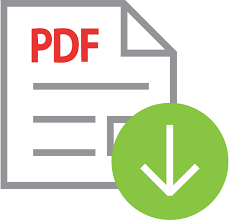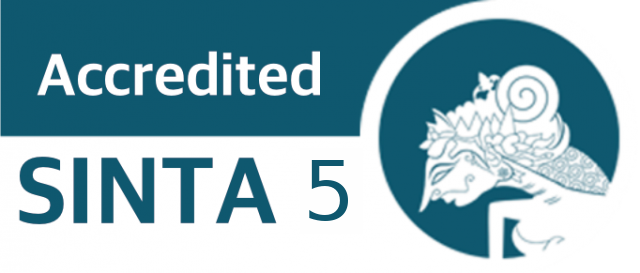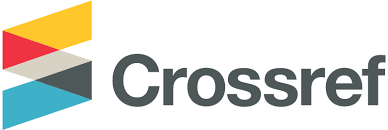Why Do Cafes Need to B.I.T.E. Their Names and Not Forget to S.I.P.?
 ),
), (1) Benguet State University
(2) Benguet State University
 Corresponding Author
Corresponding Author
Copyright (c) 2025 Ezra Isaiah Kayat Balawag, John Rey Osben Pelila
DOI : https://doi.org/10.24036/ell.v14i1.132678
Full Text:
 Language : en
Language : en
Abstract
Keywords
References
Alderman, D. H. (2016). Place, naming and the interpretation of cultural landscapes. Routledge eBooks. https://doi.org/10.4324/9781315613031-11
Almario-Magdadaro, S., & Daug, A. (2022). Descend or Defend: Iligan as a toponym and its relevance to local historiography. Langkit: Journal of Social Sciences and Humanities, 11(1), 13–26. https://doi.org/10.62071/jssh.v11i.149
Arifin, S. R. M. (2018). Ethical considerations in qualitative study. International Journal of Care Scholars, 1(2), 30–33. https://doi.org/10.31436/ijcs.v1i2.82
Bani Hani, R., & Al-Bishtawi, S. (2023). The impact of disclosures on the continuity of companies listed on the Amman stock exchange: The modified role of international accounting standard (10) events after the reporting period. Jadara Journal of Studies and Research, 9(1), 25–46. https://doi.org/10.54161/jrs.v9i1.135
Bonnell, A. D. (2012). Quality assurance in seafood processing: A practical guide. Springer Science & Business Media. https://books.google.com/books?hl=en&lr=&id=4V31BwAAQBAJ&oi=fnd
Burgess, R. G. (1984). In the field: An introduction to field research. Unwin Hyman.
Charoenphol, K., & Barrett, N. (2019). A study of factors influencing customer to select a cafe [Doctoral dissertation, Thammasat University].
Clarke, V., & Braun, V. (2013). Teaching thematic analysis: Overcoming challenges and developing strategies for effective learning. Psychologist, 26(2).
Crowe, S., Cresswell, K., Robertson, A., Huby, G., Avery, A., & Sheikh, A. (2011). The case study approach. BMC Medical Research Methodology, 11(1), 1–9. https://doi.org/10.1186/1471-2288-11-100
Cuñado, A. J. P., Painagan, C. M., Cuñado, J. a. L., Palmada, E. M. D., Mumar, Z. J. A., Naeg, R. A., Pagod, J. M., Lagrada, M. Z. G., Abrau, S. B., & Gamutan, R. J. O. (2020). Determining the role of customer satisfaction in gaining customer loyalty among cafés. University of Bohol Multidisciplinary Research Journal, 8(1), 74–85. https://doi.org/10.15631/ubmrj.v8i1.130
Dawar, N., & Parker, P. (1994). Marketing universals: Consumers' use of brand name, price, physical appearance, and retailer reputation as signals of product quality. Journal of Marketing, 58(1), 81–95.
Dodds, W. B., Monroe, K. B., & Grewal, D. (1991). Effects of price, brand and store information on buyers' product evaluations. Journal of Marketing Research, 28(1), 307–319.
Giraut, F. (2020). Plural toponyms: when place names coexist. EchoGéO, 53(1), 1 – 8. https://doi.org/10.4000/echogeo.20760
Grewal, D., Krishnan, R., Baker, J., & Borin, N. (1998). The effect of store name, brand name and price discounts on consumers' evaluations and purchase intentions. Journal of Retailing, 74(3), 331–352. https://doi.org/10.1016/S0022-4359(99)80099-2
Inocian, R., Irmano, K. J., Sitoy, E., Delgado, A. & Lozano, E. (2020). Cebu’s places named after endemic flora: Basis for innovative teaching models. The International Journal of Social Sciences and Humanities Invention, 7(1), 6241–6255. https://doi.org/10.18535/ijsshi/v7i010.06
Nash, J. (2015). Is toponymy necessary? Studies in Language, 39(1), 230–235. https://doi.org/10.1075/sl.39.1.08nas
Nevin, J. R., & Houston, M. (1980). Images as a component of attractiveness to intra-urban shopping areas. Journal of Retailing, 56(1), 77–93. http://dx.doi.org/10.2139/ssrn.2461125
Pangereyev, A. S., Kabylov, A. D., Aldashev, N. M., Umatova, Z. M., Suleimenova, Z. Y., & Shuriyeva, A. B. (2023). Epic toponyms as carriers of a linguocultural code. Eurasian Journal of Applied Linguistics, 9(1), 13-23. http://dx.doi.org/10.32601/ejal.901002
Poenaru, O. M. (2013). The relationship between toponymy and linguistics. Anadiss, 8(15), 154-166.
Rababah, M. A., Rababah, L. M., Abumelhim, M. H., Abu-Melhim, A. H., & Rababah, K. A. (2023). Interdisciplinary investigation of naming practices of cafes signages in Jordan. GEMA Online Journal of Language Studies, 23(4), 1–14. https://doi.org/10.17576/gema-2023-2304-01
Romero, J. (2022). Major place names of Spain in Metro Manila. Moenia, 27(1), 1 – 18.
Setyo, W., Muryani, C., & Nurhadi, N. (2022). Toponymic and historiography influences on place naming of villages in Klego District, Indonesia. 3rd International Conference on Geography and Education (ICGE) Malang, Indonesia (pp. 89 – 100). https://doi.org/10.18502/kss.v7i16.12155
Shatnawi, M. N., & Ayhan, A. (2022). The role of social media in spreading misinformation about COVID-19 in the Levant region. Jadara Journal of Research & Studies, 8(1), 383-395. https://doi.org/10.54161/jrs.v8i1.180
Tichelaar, T. (2002). Toponymy and language. UNSD. https://unstats.un.org/unsd/geoinfo/ungegn/docs/_data_icacourses/_HtmlModules/_Documents/D09/documents/D09-01_Tichelaar.pdf
Turaevich, T. M. (2021). Toponyms as a cultural value heritage. International Journal on Integrated Education, 4(6), 22-24. https://dx.doi.org/10.31149/ijie.v4i6.1916
Urban Dictionary. (2009). Bruncher by xchibi. https://www.urbandictionary.com/define.php?term=brunchner
Vasardani, M., Winter, S., Richter, K.-F. (2013). Locating place names from place descriptions. International Journal of Geographical Information Science, 27(1), 2509-2532. https://doi.org/10.1080/13658816.2013.785550.
Vasko, D. P. (2015). English-language naming in Belarus: its trends and features [Doctoral dissertation, Belarusian State Economic University].
Selvi, A. F. (2007). A multifactorial sociolinguistic analysis of business naming practices in Turkey [Master's thesis, Middle East Technical University].
 Article Metrics
Article Metrics
 Abstract Views : 311 times
Abstract Views : 311 times
 PDF Downloaded : 40 times
PDF Downloaded : 40 times
Refbacks
- There are currently no refbacks.
Copyright (c) 2025 Ezra Isaiah Kayat Balawag, John Rey Osben Pelila

This work is licensed under a Creative Commons Attribution-NonCommercial 4.0 International License.












